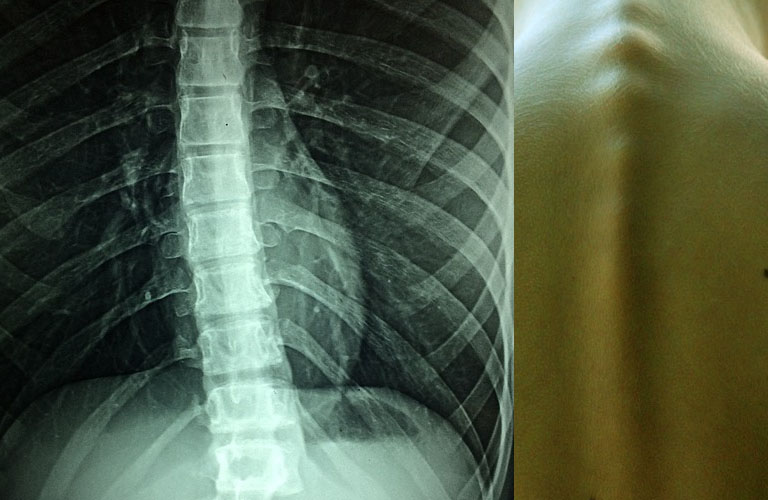Chiropractic
Chiropractic is a licensed health care profession that emphasizes the body's ability to heal itself. Chiropractors often treat problems related to the musculoskeletal system. Treatment typically involves manual therapy, often including spinal manipulation. Other forms of treatment, such as exercise and nutritional counseling, may be used as well.
The manual treatment methods used by chiropractors range from stretching and sustained pressure to specific joint manipulations, which are usually delivered by hand and involve a quick and gentle thrust. The purpose of the manipulations is to improve joint motion and function. Manipulations are most commonly done on the spine, but other parts of the body may also be treated in this way.
Chiropractic is governed internationally by the Councils on Chiropractic Education International (CCEI). This body is recognized by the World Federation of Chiropractic and the World Health Organization as the accrediting agency for schools of chiropractic around the world.
Regulations for chiropractic practice vary considerably from country to country. In some countries, such as the United States of America, Canada and some European countries, chiropractic has been legally recognized and formal university degrees have been established.
In 2005, in efforts to improve consistency and equivalency in chiropractic training, the WHO published basic training and safety guidelines to provide international minimum requirements for chiropractic education and to serve as a reference for national authorities in establishing an examination and licensing system for the qualified practice of chiropractic.
A 2005 World Health Organization (WHO) guideline states regardless of the model of education utilized, prospective chiropractors without relevant prior health care education or experience must spend no less than 4200 student/teacher contact hours (or the equivalent) in four years of full‐time education. This includes a minimum of 1000 hours of supervised clinical training.
Browse Pages:
- Traditional Chinese Medicine
- Herbal Remedies
- Acupuncture
- Ayurveda
- Mind-Body Interventions
- Energy Medicine
- Complementary Versus Alternative Medicine
- Terms Relating to Herbal Medicine
- Tips to Avoid Drug Interaction Problem
- Nutrition Info
- Wellness and Well-Being
- Health Articles
- Health Pages
- Testing Treatments

Did You Know?
Many alternative medical systems with long-standing traditions have concepts and theories of medicine that are very different from those of current Western medical thought and practice.
Reliable health information is key to making good health decisions, but it can be difficult to tell the difference between facts and myths, particularly in the area of complementary and integrative health approaches.
In many countries, some useful applications of traditional medicines have been researched, accepted and used frequently alongside Western medicine and quite often by physicians trained in Western medicine. However, the underlying belief systems are seldom scientific and are not accepted within ordinary medicine.
The strongest evidence about whether a treatment is useful and safe consists of results from several studies by different investigators. Rarely does a single study provide a final, definitive answer.
When looking for information from a study published in a medical journal, try to find out if the study has been peer-reviewed. The peer-review process subjects an author's research to the scrutiny of others who are experts in the same field (peers) and is considered necessary to ensure academic scientific quality.
Traditional medicine is considered alternative when it is used instead of known functional treatment or when it is used outside its home region.
"The art of healing comes from nature and not from the physician. Therefore, the physician must start from nature with an open mind." ~ Paracelsus
Education and Licensure of Chiropractors
Education and Licensure of Practitioners in Canada
Chiropractors are regulated in all Canadian provinces, and are licensed at the provincial and territorial level. Each province has a regulatory college established by legislation in the same manner, and with the same structure and similar regulations, as the regulatory bodies for other health care professions. The regulatory colleges are responsible for protecting the public, standards of practice, disciplinary issues, quality assurance and maintenance of competency.
Chiropractic education in Canada is currently offered at two places in Canada: the Canadian Memorial Chiropractic College (CMCC) in Toronto, and at l'Université du Québec à Trois-Rivières (UQTR) in Trois-Rivieres, Quebec. Both programs are fully accredited by the the Canadian Federation of Chiropractic Regulatory and Educational Accrediting Boards. Canadian Chiropractic students undergo a course of study similar to that of other doctoral-level health care professionals, including medicine, optometry and dentistry and have similar entrance requirements. Students are required to complete a minimum of three years of university before they are eligible for admission to the CMCC Doctor of Chiropractic Degree program and have a minimum of 7 years combined prior to graduation and licensure.
The CMCC program requires four years of full-time study, including a 12-month internship in the College's internal and external clinics including St-Josephs Rehabilitation Hospital. In Quebec, the UQTR has a five-year program following graduation from CÉGEP. CMCC also offers chiropractic graduate studies in sport sciences, clinical sciences, rehabilitation sciences and radiology following the 4-year Doctor of Chiropractic Degree. A one-year continuing education programme in acupuncture is also offered.
Chiropractors in Canada are primary contact providers, which means patients can access them directly. They have extensive training in their area of expertise and are designated to use the title "doctor" similar to physicians, optometrists and dentists after completing the extensive Doctor of Chiropractic degree program. Professionals who are recognized to use the "doctor" title are allowed to be diagnosticians – which means they will perform a comprehensive assessment to help determine a diagnosis or clinical impressions and provide a diagnosis and/or refer to another healthcare professional, as needed.
Note: However, in some cases, patients may need a referral to access coverage depending on their benefits provider.
Education and Licensure of Practitioners in the United States
To practice in the United States, chiropractors must earn a Doctor of Chiropractic (D.C.) degree, pass the National Board of Chiropractic Examiners exam, and have a state license. Graduates of chiropractic schools receive the degree Doctor of Chiropractic (DC), and are eligible to seek licensure in all jurisdictions. Many states also require chiropractors to pass an exam about state-specific laws, and all states require practicing chiropractors to take continuing education classes.
To enroll in a Doctor of Chiropractic (D.C.) program in the United States, which typically takes 4 years to complete, students must have had at least 3 years (90 semester hours) of undergraduate education , and the minimum cumulative GPA for a student entering is 3.0 on a 4.0 scale. Recommended prerequisite classes may include those of the biological, chemical, and physical sciences, including: human anatomy and physiology, embryology, genetics, microbiology, immunology, cellular biology, exercise physiology, kinesiology, general chemistry, organic chemistry, analytical chemistry, biochemistry, toxicology/pharmacology, nutrition, nuclear medicine, physics, biomechanics, and statistics.
Institutions that award the D.C. degree are accredited by the Council on Chiropractic Education, which is recognized as an accrediting agency by the U.S. Secretary of Education. In 2017, there were 15 accredited D.C. programs on 18 campuses. The Council on Chiropractic Education (CCE) sets minimum guidelines for chiropractic colleges; all 18 chiropractic institutions are accredited by the CCE.
Chiropractic education includes classes in basic sciences, such as anatomy and physiology, and supervised clinical experience in which students learn skills such as spinal assessment, adjustment techniques, and making diagnoses. Some chiropractors complete postgraduate education in specialized fields, such as orthopedics or pediatrics.
Note: The scope of chiropractors’ practice (that is, the types of services they are allowed to provide) varies from state to state. Health insurance plans may cover chiropractic, but coverage may be partial rather than complete.





